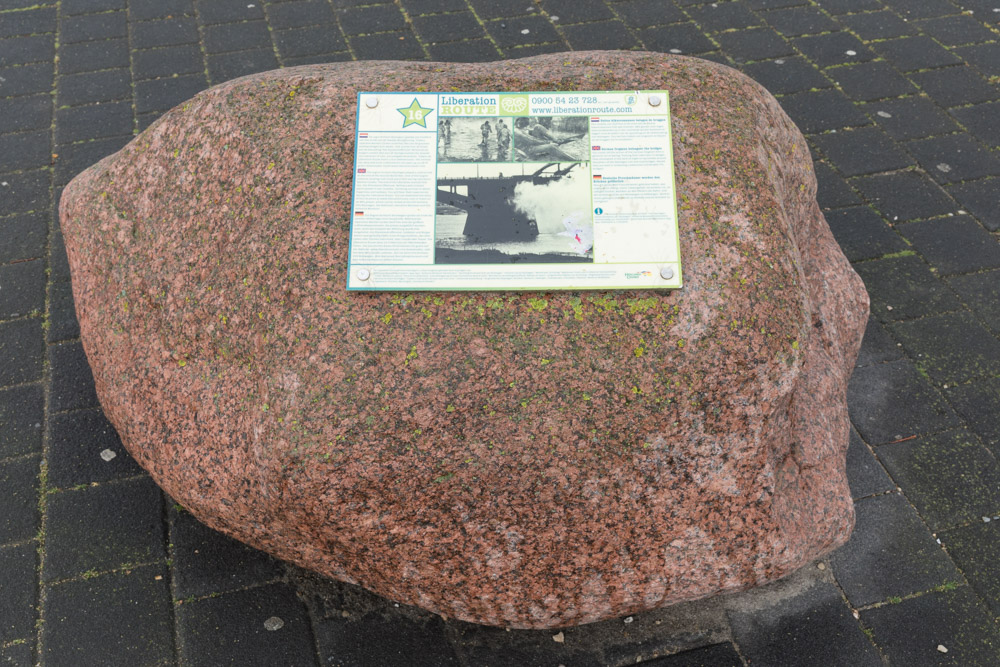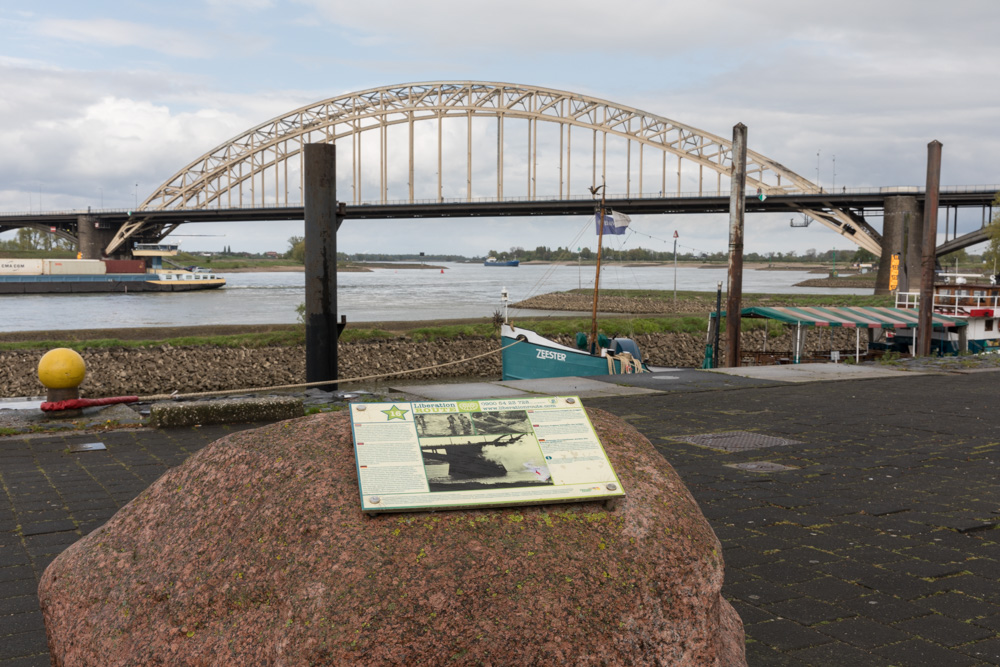Liberation Route Marker 016
Liberation Route Europe is a certified Cultural Route of the Council of Europe. With hundreds of sites and stories in nine European countries, the route links the main regions along the advance of the Allied Forces in 1943-1945.
The entire route consists of themed routes that can be travelled by by hiking, walking, cycling and car. These routes pass numerous historical and interesting sites and tell stories from a multitude of perspectives that were important in the final phase of World War II.
Many routes feature listening spots, offering the opportunity to listen to a historical story at a location. In addition, many ‘Vectors of Memory’ have been placed, indicating that the passer-by is on one of the Liberation Routes.
The routes can be found on the Liberation Route Europe website or in the app through which many stories can also be listened to.
German frogmen beleaguer the bridges
You could call the action of the German frogmen here a genuine act of daring. Putting their own lives in danger, they attempted in the dark of night to lay bombs around the pillars of the Nijmegen rail and road bridges. Would they succeed in remaining undetected and disable the bridges?
In September 1944, the divers of the German Marine Einsatzkommando MEK 65 were given the highly dangerous task of blowing up the river bridges in Nijmegen. Of the 12 frogmen involved in the operation to destroy these two bridges, ten were captured by the British. Three of these men later died of wounds sustained during their attack. Two frogmen of the first group, whose target was the railway bridge, managed to escape capture. In the fast-flowing waters of the river Waal, the men lost touch with each other. Around 6 o'clock in the morning, the two divers heard a huge explosion - it was the railway bridge. The divers were later awarded high military honours for this action.
The Germans charged to blow up the road bridge were less successful. The Waal river current was too powerful, and they were seen. Under heavy fire, they desperately tried to sink their bombs to the correct depth, and activate the detonator timing. They succeeded in the latter, but the bombs were too far out of position, and therefore only did minor damage. The frogmen, totally exhausted, floated to the banks of the river, where they were captured by the Allies.
Audiospot - German frogmen beleaguer the bridges
Do you have more information about this location? Inform us!
Source
- Text: TracesOfWar & Liberationroute.com
- Photos: Arjan Vrieze (1, 2, 3), Peter van Steenbergen (4)
Related books
Nearby
Museum
Point of interest
Monument
- Memorial "We Do Remember" - Nijmegen
- Memorial Grenadier Guardsviaduct - Nijmegen
- Memorial Albany Helps Nijmegen - Nijmegen
Cemetery
- Dutch War Grave Nijmegen - Nijmegen
- Commonwealth War Graves Rustoord Cemetery Nijmegen - Nijmegen
- Jewish War Graves Nijmegen - Nijmegen
Remembrance Stone
- Stumblin Stones Sint Stephanusstraat 62 - Nijmegen
- Stumbling Stones Stikke Hezelstraat 41 (formerly no. 94) - Nijmegen
- Stumbling Stones Stikke Hezelstraat 54 (formerly 46) - Nijmegen
































